Up the pleasure of sailing
Getting the boat off the trailer and heading out there on the water is just magic. Whether you’re going fishing, wakeboarding or island hopping for a few days, sailing means freedom. You want that same feeling when it comes to power. The freedom to charge your phone and play your favourite music wherever you are. Victron’s clever energy solution deliver that freedom for any small boat.
Imagine you take a friend fishing for the weekend. The outboard engine takes your small boat to the middle of the lake. The day’s catch will be the dinner you cook before you camp for the night on a little island.
Let’s consider the Optimal Energy plan that helps you enjoy the trip in comfort.
Consumption
How much do you need?
Even a small boat relies on electrical equipment. Everything fitted in the boat will run on DC, but you’ll want an AC outlet to charge a phone or a laptop. All things electric use a certain amount of Watts. Adding up the Watts is only half of the story. Time is just as important. You might have 100 Watts in lights on board, but they’re on for a limited amount of time only. A little cool box will take 50 Watts, but is running all the time.
For inspirational purposes we’ve outlined 2 system examples based on ‘normal’ and ‘heavier’ use.
Example 1
The lights may use 100W an hour, but are only used 4 hours a day.
100W x 4 hrs = 0.4 kWh / day
Example 2
The coolbox uses 50W an hour but is on the entire day (actually cooling ½ of the day)
50W x 24hrs/2 = 0.6 kWh / day
Storage & conversion
How much energy should be stored?
You don’t want to run the engine all the time. It will scare off the fish. The solution is to store energy in a (house) battery, from which the inverter converts the stored power to 230V. The battery can be charged with shore power and from the alternator along the way. If you plan for trips that last days, make sure your battery has enough capacity to support you for 48 hours as a rule of thumb.
x 2
The storage capacity of a lithium battery should be two times the daily power consumption.
x 4
Due to its ±50% smaller discharge capacity, the storage capacity of a lead-acid battery should be four times the daily power consumption.
Conversion
The inverter should be sized to handle the average load continuously and should match the expected peak power current, which our inverters handle very well (on average 2 x their continuous current).
Generation
Where does the power come from?
Sources of power
Power profile


Normal and heavier power profiles in kWh, based on the daily energy consumption, which should be in balance with the generation.
Storage batteries in Ah, double the capacity using lead-acid batteries.
System diagram
for a lithium and lead-acid battery based system
How do the system design considerations translate into a robust system?


AC devices
Devices you bring on board usually need an AC outlet. Think of:
- Phone charger
- Laptop
- Drone batteries


Battery charger
As the name suggests: the battery charger recharges the boat’s battery when plugged into shore power. At the same time the Victron battery chargers will also power the boat’s electrics.
All Victron battery chargers operate automatically. You can safely keep them connected to the battery all the time, even when the boat is not in use. Waterproof chargers are also available.

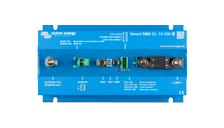
Battery Management Systems
Battery management systems take excellent care of Lithium batteries, protecting the individual cells of LiFePO4 batteries against over voltage, under voltage and over temperature and will shut down or reduce charging (VE.Bus products only) or disconnect the loads when this occurs.
Victron Energy offers several BMS options, in general the VE.Bus BMS and smallBMS signal separate devices to disconnect the charging (Inverter/Chargers, Cyrix-Li, DC-DC chargers) or disconnect the loads (BatteryProtect, Inverter/Charger), the modular Lynx distribution system features the Lynx BMS and other modules for more control over the DC busbar. For vehicles and boats all-in-one functionalities are available in the Smart BMS versions for Victron Lithium batteries, but also include current limiting to protect the alternator from overheating and BatteryProtect-like functionality to shut down the loads when pre-set critical battery conditions are met.
Victron Energy also offers full flexibility when it comes to selecting a third-party off-grid battery bank (and their BMS) of choice. A large number of well supported Lithium battery manufacturers can be easily integrated through the use of a mandatory GX-device. This flexibility enables our customers to perfectly match their off-grid needs for their unique power situation. When working with unsupported brands, a Victron Energy Battery Monitor is required to pass on accurate state of charge readings to the wider system.
See all our Battery Management Systems
The professionals choice:
See which product is recommended for this system example
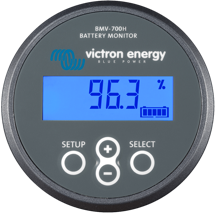
Battery Monitors
A battery monitor is like a "fuel gauge" for your battery. It records how much power is consumed and charged. The battery monitor calculates the state of charge, remaining capacity and time till empty. The battery voltage does not give an accurate indication of how full the battery is (especially not under load). A battery monitor does.
Victron Energy battery monitors keep track of historical data, like the number of charging cycles, deepest discharge, highest voltage, lowest voltage and so on. It will alert you to critical conditions such as low voltage or low charge and can even shut down the entire power supply to avoid expensive battery damage, or start a generator.
Victron offers battery monitors with or without display, Smart versions allow you to track the detailed data and adjust settings in our free VictronConnect app.
Most Lithium systems require a Battery Management System, which can feed battery information to the wider system. In this route a Battery Monitor might become redundant. See Battery Management System for more information. See all our Battery Monitors

The professionals choice:
See which of our Battery Monitors is recommended for this system example
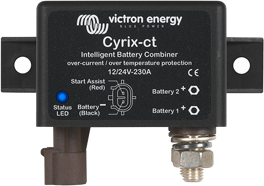
BatteryCombiner
The Cyrix BatteryCombiner is the only safe way to connect the house battery to the starter battery (to start your boat’s engines). With a BatteryCombiner you can charge the house battery from the alternator without running the risk of draining the starter battery (which always should be ready to go). When other sources of power are available (eg. shore/solar/generator power), the Cyrix BatteryCombiner will allow bi-directional charging from the house battery to the starter battery.
When the Voltages of the starter and house batteries are the same, use a Cyrix: its current rating should be equal or bigger than the current rating of the alternator. If the house battery is Lithium and the alternators Amperage is smaller than the house battery, or when the Voltages of the starter and house battery are different: use a Orion or Buck-Boost.

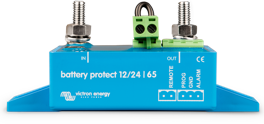
BatteryProtect
The BatteryProtect disconnects the battery from non-essential loads before it is below a pre-set level (a complete discharge would damage the battery) or before it has insufficient power left to crank an engine.
There is more to a Victron Energy BatteryProtect. Built-in shutdown delays ensure vital electronics aren’t disconnected in error, i.e. when starting an engine causes a short drop in voltage. It will also automatically reconnect everything when the battery is sufficiently recharged.
The BatteryProtect has a remote switch, so it can be turned on/off via a BMS or switch. The smart version is programmable via the VictronConnect app.

The professionals choice:
See which BatteryProtect is recommended for this system example
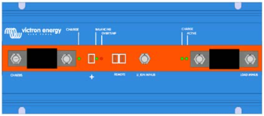
BMS 12/200
The BMS 12/200 is a dedicated battery management system (BMS) that protects Victron Smart 12,8V LFP batteries against deep discharges, overcharging and high temperatures with up to 200 Amps maximum DC current. When critical values are exceeded, the BMS acts immediately: loads are disconnected physically in case of a deep discharge and charging is stopped when there is a risk of overcharging. High temperatures trigger an immediate end to both charging and discharging.
This is the only BMS that can be directly connected to an alternator, protecting them from overload/overheating. This works with a combination of an AB fuse (rated in accordance with the expected max load current of the alternator) and an internal programmable input (which limits the input current electronically to 80% of the AB fuse).
Please check your manufacturer for the maximum charging current of your alternator and size AB fuses of the BMS 12/200 accordingly, see manual.
When different Lithium batteries & higher voltages are used, other solutions are needed, such as the VE.bus BMS and Lynx-Ion.
See our bigger boat types to see a bigger Lithium system and BMS See more info on alternator charging Lithium (and not blow them up)

Boat engines
Small motor boats rely on their engine to get the job done. Their engine comes with an alternator to charge the engine batteries, drive fuel pumps, etc.
Once the starter batteries are recharged, the engines can also recharge the house battery and power the boats electronics. When the engine is used the majority of the day, there will always be enough energy generation to compensate the daily consumption. However, when the boat isn’t used over time, batteries might run dead eventually. Our battery chargers take excellent care of your batteries when in the harbour or garage.


Boat Electronics
A small boat will have several electronic devices; they all run of the house battery. Think of:
- Boat control panel
- Log/depth sounder
- Chart-plotter or GPS
- VHF Radio
- Navigation lights
- Pump – Bilge, deck wash
- Fridge
- Interior lighting
- Music player
- Bait Tank – Recirculating
- Electric Fishing Reels/winches


Chargers
Battery chargers recharge batteries (DC) when plugged into shore power (AC).
At the same time the Victron Energy battery chargers can also power devices directly.
All Victron Energy battery chargers are developed for professional duty. Our advanced multi step charging algorithms get the best out of your battery, giving the battery the power it needs, maintaining its health, ensuring better performance... and a longer life.
Smart models work with VictronConnect, so you can check the status and configure all settings of your battery charger remotely via Bluetooth. Chargers with different waterproof ratings (IP rating) are also available. Our wide range of models makes it easy to select the right charger, saving you the cost of having to buy a larger one.
See all our chargers
The professionals choice:
See which of our Battery Monitors is recommended for this system example
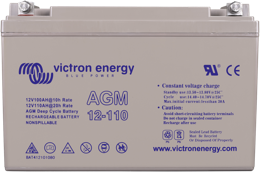
House battery
The house battery supplies power to your boat’s electrical system. Choose a battery with a generous capacity as there might be long intervals between re-charges. Sometimes the starter battery doubles up as the house battery. If you opt for this set-up, make sure the battery is well protected against discharge. It will be hard to start the boat when the battery is flat.
For a house battery you can choose from two types: lead-acid and lithium. There are various reasons to favour one over the other. Here are a few common ones:
|
|

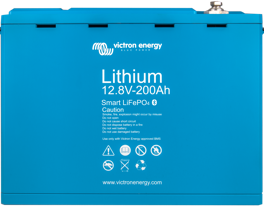
House battery
The house battery supplies power to your boat’s electrical system. Choose a battery with a generous capacity as there might be long intervals between re-charges. Sometimes the starter battery doubles up as the house battery. If you opt for this set-up, make sure the battery is well protected against discharge. It will be hard to start the boat when the battery is flat.
For a house battery you can choose from two types: lead-acid and lithium. There are various reasons to favour one over the other. Here are a few common ones:
|
|

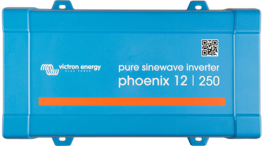
Inverter
An inverter creates AC power from a DC source. It lets you use devices on board that need a regular AC outlet.
The inverter needs to be big enough to handle the maximum AC load you want to bring on board. If the load exceeds 375 VA, you might consider a combined inverter/charger instead. Models start at 500 VA.

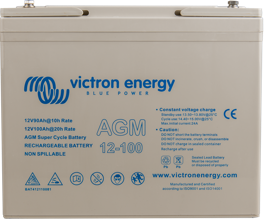
Starter Battery
The starter battery is needed to start your boat’s engine. These batteries are different from house batteries and engineered to deal with a large discharge current. The starter battery should always be ready to go. It’s best to isolate the starter battery from all other electrical circuits on board, so it cannot be accidentally drained of power, with a BatteryCombiner.

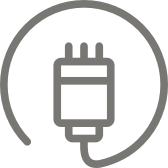
Shore Power
Either in the marina or back home you’ll hook the boats charger up to shore power to recharge the battery. Shore power can also be used for maintenance and to run large AC loads.


VictronConnect
All Victron products on your boat can be monitored and controlled from the palm of your hand. Just connect the VictronConnect App via Bluetooth and you’ll have direct access to indicators like battery voltage and current. You can also turn devices on or off, as well as change their settings.
See what the VictronConnect app can doPower consumption will vary from boat to boat and from owner to owner, even on small boats. Here are two examples - with a normal and a heavier daily energy consumption - of what an Optimal Energy plan for a small boat could look like.
Please note that many more factors come into play when designing and installing your optimal solution: your Victron Professional will gladly help you with that.
MultiPlus magic: small generator, big power.
An expert view: lithium or AGM aboard?
Get your wiring right with Wiring Unlimited
Show more
See your system performance right from your Glass bridge
See all our Marine products and more configurations.
Real-time insight and complete control with our VictronConnect app
Find your local dealer
Our well established global network of local Victron Professionals is dedicated to help find an optimal solution for your challenge.
Count on our worldwide service
At Victron we find it essential that customers are serviced and supported quickly and competently. This is why our global network of Victron Professionals pack the highest level of technical know-how and are committed to deliver repairs as fast as possible.
So you can start or continue your journey, wherever you’re headed.
